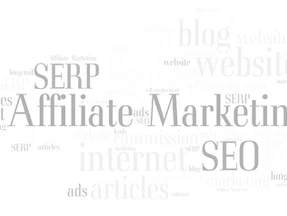There are heaps of complex terms and acronyms in marketing. This can sometimes be a bit overwhelming for newbies and experts.
Over the next few weeks, I will publish a few terms or acronyms to help you understand the alien language marketers speak.
- A/B Testing, at its simplest, is randomly showing a respondent one version of a design or page — Version A or Version B — and tracking the changes in behaviour based on which version they saw. Version A is normally your existing design (“control” ); and Version B is the “test,” with one copy or design element changed.
- Account-Based Marketing (ABM) is a customer-centric strategic sales approach designed to manage customer accounts' acquisition, growth, and retention through highly personalised, relevant, timely communication and content.
- Ad clicks refer to the number of times users click on an online advertisement.
- Business-to-business (B2B) marketing refers to marketing products or services to other businesses and organisations.
- Buying roles refer to the activities that one or more person(s) might perform in a buying decision. Six buying roles can be distinguished as Initiator, Influencer, Decider, Buyer, User and Gatekeeper.
- Clickbait is text or images that are designed to gain attention and entice users to “click” through a that redirects them to another web location. This content often uses sensational or deceptive elements to motivate people to click.
- Click-through rate (CTR) is a way of measuring the success of an online advertising campaign for a particular website as well as the effectiveness of an email campaign by the number of users that clicked on a specific link.
- Customer lifetime value (CLV) is the dollar value of a customer relationship, based on the present value of the projected future cash flows from the customer relationship.
- Direct marketing is a form of communicating an offer, where organisations communicate directly to a target customer without the use of an advertising middleman. Common forms of direct marketing include brochures, catalogues, flyers, newsletters, emails, phone calls etc.
- Marketing mix refers to the combination of controllable marketing variables that the business uses to pursue the desired level of sales in the target market. The four P's of the Marketing mix is Product, Place, Promotion and Price.
- Geo-targeting involves the delivery of digital ads specific to the geographic location of the searcher.
- Inbound marketing is marketing in which customers initiate contact with the marketer in response to various methods used to gain their attention. These methods include email marketing, event marketing, content marketing and web design. One purpose of inbound marketing is to establish the business as a source of valuable information and solutions to problems, thereby fostering customer trust and loyalty.
- A keyword or keyword phrase is a specific word or combination of words that a searcher might type into a search engine.
- Outbound marketing is a newer term for traditional marketing. In outbound marketing, the marketer initiates contact with the customer through methods such as TV, radio and digital display advertising. It is often used to influence consumer awareness and preference for a brand.
- Pay-per-click (PPC) is an internet advertising pricing model in which advertisers pay agencies and/or media companies based on how many users clicked on an online ad or email message.
- Return on Marketing Investment (ROMI) is the contribution to profit attributable to marketing (net of marketing spending), divided by the marketing investment.
- Search engine optimisation (SEO) is the process of developing a marketing or technical plan to improve visibility within one or more search engines. On a technical side, SEO refers to ensuring that a website can be indexed properly by the major search engines and includes the use of the proper keywords, content, code, and links. On the marketing side, SEO refers to the process of targeting specific keywords.
- A unique selling proposition (USP) is an approach to developing the advertising message that concentrates on the uniquely differentiating characteristic of the product/service.



